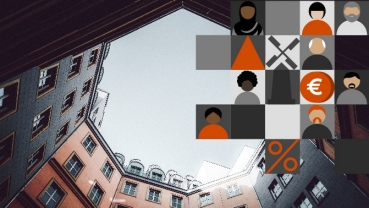
Education 5.0: focus on pupils, not on technology
Involve more ministries in developing a vision for education
Education has been under great pressure over the past year. Before we knew it, lessons were being taught mainly on a screen instead of in a classroom. Interaction between teachers and pupils was minimised.
A necessary solution for the short term, but not the best option as we move forward. Together with the other ministries concerned, the Ministry of Education needs to formulate a more overall vision for education, the role of technology and the health of young people.


Kristina Dervojeda, head of the Innovation Research Centre at PwC
Dehumanised education
‘Efficient, cost-effective and easy to use: technology offers huge potential for education,’ says Kristina Dervojeda, head of the Innovation Research Centre at PwC.
‘However, we see that this is resulting in many schools – even primary schools – turning to a "dehumanised" version of education. That implies a minimum amount of human interaction, and a shift in decision-making from people to technology. These days, children even use technology to learn basic skills such as reading, writing and arithmetic. This trend is seen not only in standard schools, but also in schools with a special teaching philosophy, such as Montessori schools. That causes me concern,’ says Kristina Dervojeda.
Working this way might be a good short-term solution in unusual situations such as the current coronacrisis, but it could have a very detrimental effect on students in the long run. Research shows that the youngest groups (under twelve years of age) are especially vulnerable to these effects. Delayed development, aggression, depression and digital addiction are just some of the effects we are seeing. What this tells us is that we should be very cautious about relying on technological solutions.
Long-term vision on education desirable
‘Politicians need to come up with a long-term vision for this. It is not only a matter for the Ministry of Education, but for all the ministries involved. The use of technology in education is set to increase, even after corona,' says Robert Loesberg, partner and chairman of the Education Group at PwC. It would be good to see the government coming up with a long-term vision on how technology can be properly incorporated into education without losing sight of the human aspect.’

‘Politicians need to come up with a long-term vision for the use of technology in education, without losing the human aspect.'
Political task to make education more relevant
According to Loesberg, technology can be a huge help in adapting education to specific needs. ‘Technology can help to reduce inequality of opportunity by helping children in the subjects they struggle with. That makes education less generic.’
Dervojeda adds that the government should concentrate much more on the results students achieve. There should also be less emphasis on teaching individual subjects and more on multidisciplinary themes such as sustainability, energy and health. ‘That would make education much more relevant to the pupils themselves, but also to society as a whole. That is a task for our politicians.’
What is education 5.0?
Loesberg and Dervojeda refer to this as "Education 5.0". By this they mean the education of the future, which is about people rather than technology.
‘In Education 5.0, technology is a way to add value and make education more effective. Education 5.0 is not about less or more technology, but about making conscious, responsible choices without losing sight of the bigger picture. In Education 5.0, special attention is paid to aspects such as privacy, ethics, security and technological mindfulness. It prepares students for lifelong learning and lays the foundation for a wide range of skills that go far beyond the digital.’
Recommendations for the new government in developing an overall vision:
- Approach technological transformation from the perspective of desired learning outcomes for people and do not put technology at the centre of the education agenda.
- Encourage initiatives to identify and disseminate good examples of the elements of Education 5.0.
- Encourage education and training providers to develop common guidelines for the design and implementation of Education 5.0 and encourage their adoption.
- Encourage initiatives to monitor, analyse and prevent bad examples of digital education.
- Develop guidelines for education providers and students on data protection and privacy, as well as other aspects of digital ethics.
- Provide a healthy environment in schools that takes account of the sharp rise in the use of technology. Examples include minimising/removing electromagnetic radiation in schools, encouraging physical activity among students, and initiatives that make students aware of the consequences of excessive screen use.



















